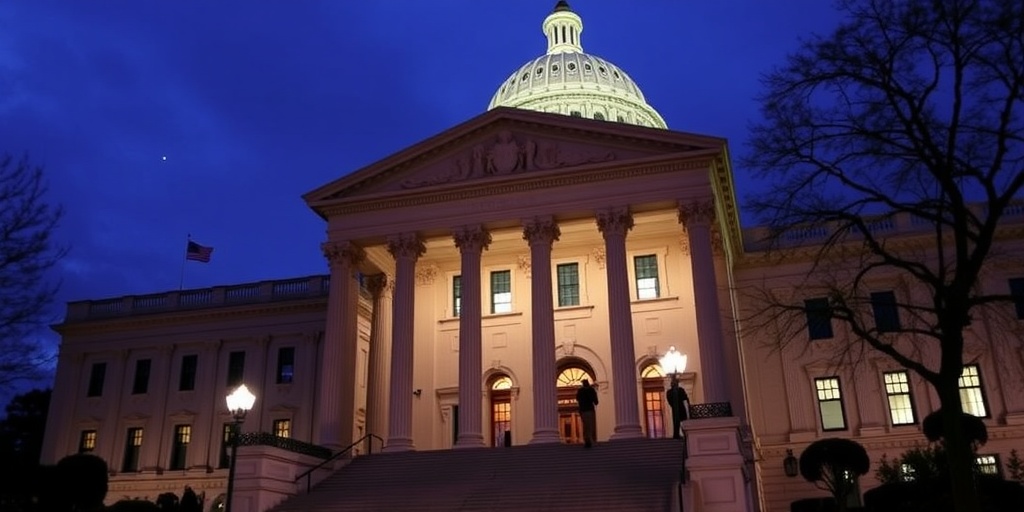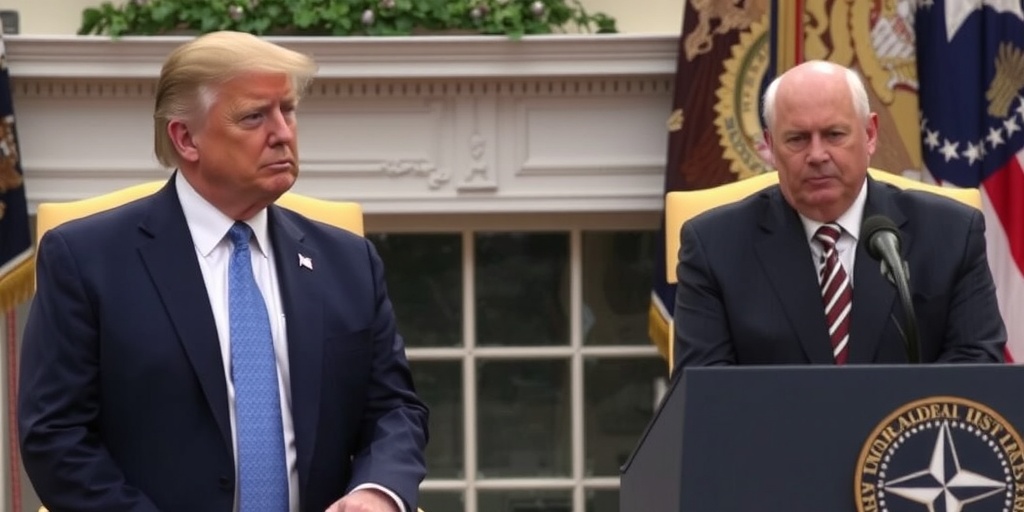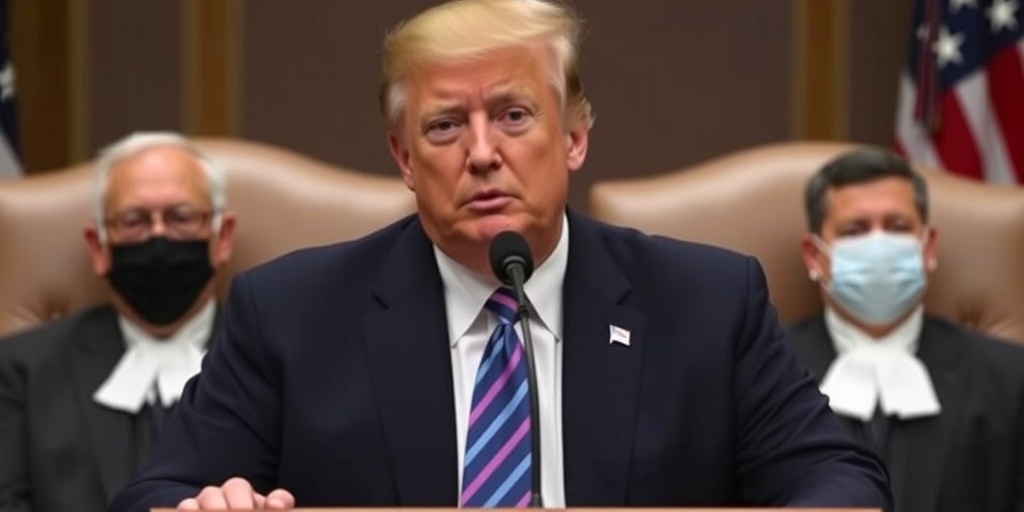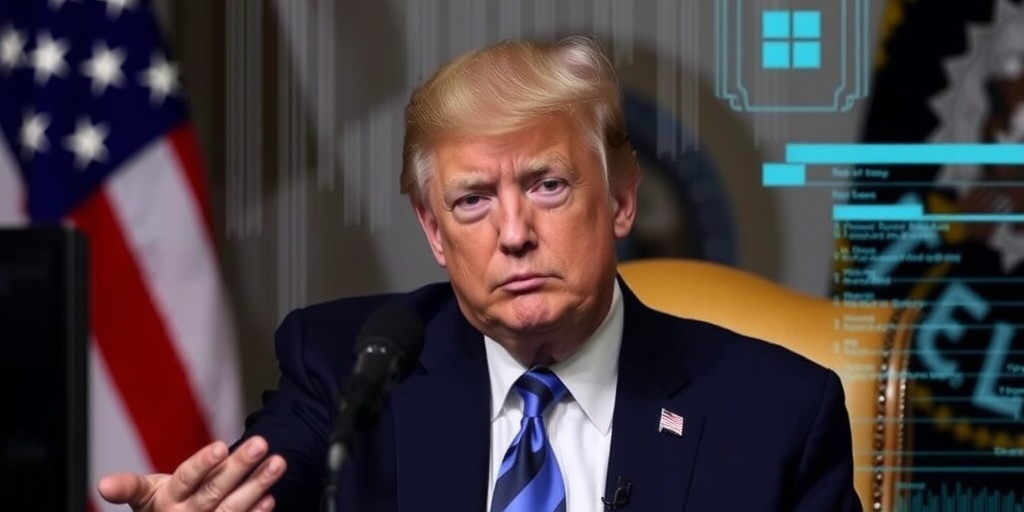Now Reading: Senate Passes GOP Budget Plan After All-Night Vote-a-Thon
-
01
Senate Passes GOP Budget Plan After All-Night Vote-a-Thon
Senate Passes GOP Budget Plan After All-Night Vote-a-Thon

Senate Approves GOP Budget Blueprint in Early Morning Vote Amidst Party Line Tensions
In the early hours of Saturday morning, just after 2:30 a.m., the Senate approved a crucial budget blueprint put forward by Republicans, a significant step towards facilitating President Trump’s domestic agenda. This approval came after a prolonged overnight session instigated by Democrats in protest of the G.O.P. initiative, which the President described as “one big beautiful bill” aimed at substantial spending and tax cuts.
The Senate vote concluded with a narrow margin of 51 to 48, reflecting a stark division along party lines. This budget resolution serves as a vital tool for Republicans, allowing them to expedite legislative processes through the reconciliation method, effectively shielding their proposals from a potential filibuster. Despite ongoing disputes regarding the composition of the bill between House and Senate Republicans, a temporary and intricate compromise has been established, permitting advancement towards the legislative objectives.
Senators Rand Paul of Kentucky and Susan Collins of Maine were the lone Republicans who diverged from their party, voting against the budget blueprint. The resolution will now proceed to the House of Representatives, where it must also be adopted before lawmakers can begin drafting specific tax and spending proposals.
In a pre-vote statement, Senator John Thune, the majority leader from South Dakota, expressed optimism about the resolution, highlighting its significance as the first step towards a final bill aimed at making the tax relief instituted in 2017 permanent. He emphasized the potential developmental impact on border security, national security, and energy security. Following his remarks, he encouraged the Senate to proceed with the voting process.
The passage of this budget resolution was preceded by an arduous session known as a vote-a-rama, a potential marathon of swift votes concerning amendments to budget measures. Although many of these proposals faced slim chances of becoming law, Democrats leveraged this platform to designate politically charged votes that could serve as ammunition for future campaign advertising against Republicans.
During the vote-a-rama, Democrats compelled Republicans to express their stances on several contentious issues, including President Trump’s expanding global trade war, proposed cuts to Medicaid, and a recent revelation regarding national security officials using the Signal messaging app for discussions regarding sensitive military operations. Minority Leader Senator Chuck Schumer of New York articulated the Democrats’ purpose, urging Republicans to consider blocking Trump’s tariffs and other proposed cuts to key social programs.
The overnight voting marked the second such session conducted by the Senate this year, and while Republicans generally maintained cohesion, even those with concerns regarding Trump’s policies and other initiatives expressed public solidarity with their party’s budget strategy.
A party-line vote resulted in the rejection of an amendment proposed by Senator Mark Warner, a Democrat from Virginia, aimed at prohibiting the use of commercial messaging applications for sensitive military communications. In another split-vote scenario, Republicans denounced an amendment from Schumer that sought to eliminate Trump’s tariffs if they raised grocery prices for American families. Additionally, an attempt to prevent disruptions in security assistance to Ukraine also fell short despite bipartisan support from two dissenting Republicans, Collins and Lisa Murkowski.
Despite some cross-party voting, the Senate ultimately passed an amendment introduced by Senator Dan Sullivan, affirming a commitment to protect Medicare and Medicaid, affirming some desiring measures.
The budget resolution leaves several significant questions unresolved. Earlier in February, the House passed a measure aiming for a comprehensive bill encompassing $4.5 trillion in tax cuts alongside a $2 trillion reduction in federal spending over the next decade. However, differences emerged with the Senate’s plan that deferred taxation and spending specifics but included substantial increases in military spending and border security funding.
Republicans have effectively deferred decisions on key fiscal matters, such as the extent of spending cuts necessary to counterbalance tax cuts. The Senate’s current budget outline permits $1.5 trillion in tax reductions but conceals an additional $3.8 trillion intended for the extension of the 2017 tax cuts, which Senate Republicans argue should not be reflected as a federal cost in the balance sheets.
As the 2017 tax cuts are set to expire at year-end, an extension is essential in the upcoming bill, yet Republicans aim to navigate budgetary rules, labeling the move as cost-neutral. Consequently, the envisioned tax cut size in the Senate outline escalates to approximately $5.3 trillion over the next decade, with $1.5 trillion earmarked for new initiatives, surpassing the House’s framework.
The disparities between the House and Senate budget proposals extend beyond tax cuts, involving additional spending on military and immigration matters, which could lead to an estimated $5.7 trillion increment in national debt within the next ten years. The Senate’s budget resolution calls for a $5 trillion augmentation in the debt limit in comparison to the $4 trillion suggested in the House plan. Some House Republicans have voiced concerns over supporting a Senate resolution perceived as lacking fiscal restraint.
“We must be honest about our priorities; our debt should be a concern,” remarked Representative Greg Murphy, a Republican from North Carolina. The situation illustrates the ongoing challenges Republicans face in unifying their divergent fiscal strategies as they navigate the legislative terrain ahead.
With the clock ticking on the legislative process, the impending negotiations within both chambers will significantly influence the trajectory of fiscal policy and broader economic implications as lawmakers strive to reconcile their differing visions. Andrew Duehren contributed to this report.
Stay Informed With the Latest & Most Important News
Previous Post
Next Post
-
 01New technology breakthrough has everyone talking right now
01New technology breakthrough has everyone talking right now -
 02Unbelievable life hack everyone needs to try today
02Unbelievable life hack everyone needs to try today -
 03Fascinating discovery found buried deep beneath the ocean
03Fascinating discovery found buried deep beneath the ocean -
 04Man invents genius device that solves everyday problems
04Man invents genius device that solves everyday problems -
 05Shocking discovery that changes what we know forever
05Shocking discovery that changes what we know forever -
 06Internet goes wild over celebrity’s unexpected fashion choice
06Internet goes wild over celebrity’s unexpected fashion choice -
 07Rare animal sighting stuns scientists and wildlife lovers
07Rare animal sighting stuns scientists and wildlife lovers





















